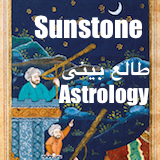The New Yorker:
This year’s edition of the festival offers inventive visions, in fiction and nonfiction, of passionate lives amid difficult circumstances.
By Richard Brody
I’ve never been to Park City, Utah, where the Sundance Film Festival takes place, but for years I’ve been going to Sundance in New York, thanks to press screenings here of some of the festival’s most notable offerings. And, ever since the pandemic gave rise to digital festivals, a wider range of Sundance films have been viewable online. Of course, there’s very little festivity to an online festival: crash-course cramming of movies at home while also living one’s regular life is a very different experience from the bubble-like focus on the films that in-person attendance offers; and, because not everything that screens in Park City is available online, it’s impossible to step back and discuss at large a festival experienced at small. Nonetheless, it’s already clear that this year’s Sundance Festival has introduced some movies that don’t merely deserve theatrical release but are noteworthy for their distinctive artistry.
Until now, the filmmaker Mary Bronstein has been a cinematic one-hit wonder; her début feature, “Yeast” (2008), was an emotionally unhinged but thoughtfully composed drama of three female frenemies charging at (and sometimes away from) one another in quests for self-definition. Her second feature, “If I Had Legs I’d Kick You,” shares some key traits with its predecessor: it’s a film of near-constant conflict and tension, and its cinematography is as integral to its flayed-nerve sensibility as is the action itself. Rose Byrne stars as Linda, who’s seen in extreme closeup to start the film, in a scene that shudders the screen as it establishes her stresses and frustrations. She’s in a group-therapy session and is described by her young daughter (Delaney Quinn) as “stretchable,” by contrast with her husband, whom the girl deems “hard.”
Go to link










Comments